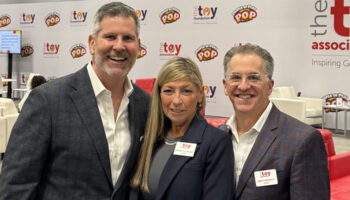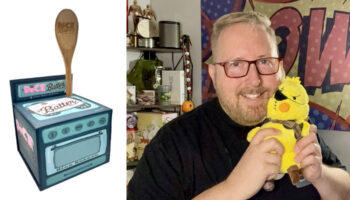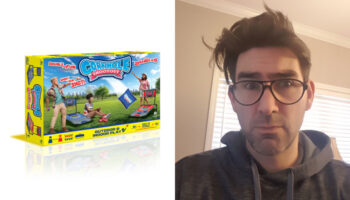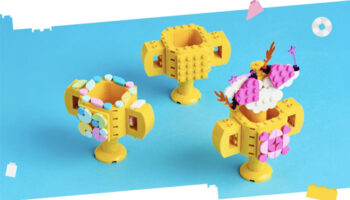War Games: How Monopoly became a wartime tool for the UK’s secret service

So… Maggie Graham! We’re going to discuss how the British Secret Service asked Waddingtons to hide special equipment inside Monopoly sets… And help prisoners of war escape their enemy’s clutches! From what little I know, it all sounds incredible.
It is incredible!
Alright… We’ll start with you: you’ve already introduced yourself in the context of a bigger interview about Waddingtons. People can read that here. Let’s have that intro again, though… Who are you, and what’s your connection to Waddingtons?
So I’m Maggie Graham. I did Waddingtons PR for a while, and I’m the daughter-in-law of Beric Watson. Beric was the middle of three brothers – the third Watson generation to run Waddingtons.
Amazing. I often use the word ‘dynasty’ to describe the Watson family, but it wasn’t like the Carringtons and the Colbys… It was far more interesting than that! Now, am I right in saying you’ve written an as-yet published play about the things we’re going to discuss? What’s at the heart of it?
Yes, I’ve written a short play on it. At the heart of it is simply the fact that – during World War 2 – the British Secret Service used special sets of Monopoly and other games to smuggle escape items into prisoner of war camps. These were various items that soldiers could use to help them escape from prisoner of war camps. For example, they asked Waddingtons to create playing card with thin maps hidden between the paper layers. Did you know that?
I knew it, but I don’t think many people do. It’s fascinating! And maps to hide inside uniforms… What were those printed on?
They used fabrics such as silk, linen or rayon… Fabrics that rustled less than paper which, of course, was vital as it wouldn’t make a noise or be felt through clothing if a prisoner was frisked.

And a map might also be hidden in a Monopoly board as well, you were saying?
Yes – maps in the board itself. There were also cut-out slots in the cardboard to take a small compass and several fine-quality files. Even the playing tokens were converted into real gold or silver pieces to be used for exchange purposes and bribery…
No?!
Also, the money was set up in a special way. The top few notes would be Monopoly money… But underneath would be real currency. That might be German marks, French francs or Italian lira – whatever was needed depending on where the set was being sent. To that point, there was a little code system printed on the boards. For example, if the ‘Free Parking’ square was marked with a full stop, there was a map of Northern France and Germany inside. A full stop after ‘Marylebone Station’ meant a map of Italy… A dot after Mayfair indicated a map of upper Germany and Scandinavia.
And that would be a very specific little mark that looked like normal printing?
Yes. And because the government didn’t want to compromise the security of Red Cross deliveries, they created a bogus charity to send these Monopoly sets and other escape items to the camps. They really did think of everything!
Well, so far, we’ve been saying, ‘they’ in the vaguest way! About which section of the British Secret Service are we talking?
It was a branch called MI9…
MI9? Thought it was a Tom Cruise film… So: MI5 is short for Military Intelligence, Section 5. That’s the UK’s domestic counterintelligence and security agency. MI6 is the overseas security service… But I suppose it makes sense that there was an MI1, MI2, MI3, MI4, MI7, MI8… And you’re telling me about MI9! What was their objective?
MI9 was set up in 1939. Their job was to help Allied soldiers and airmen to evade capture, and – if they were taken prisoner – to escape. So yes… It was set up as a new department for war time. And if you think about some of the gadgets that Q gives to James Bond in those books and films, you might get a flavour of some of the things MI9 did… Because it’s said Ian Fleming was inspired by MI9’s activities.
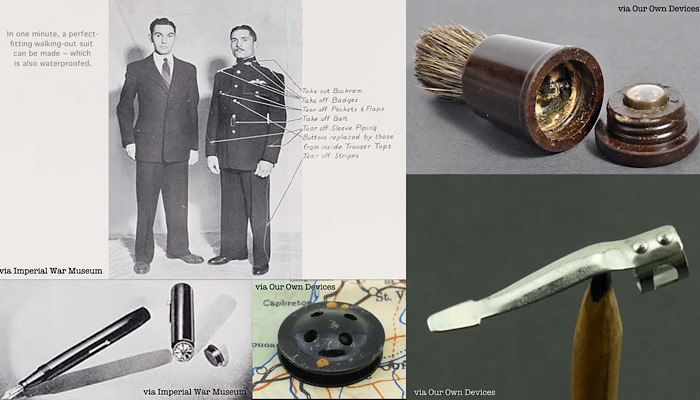
So that whole department, that Q department in James Bond, was likely to have been inspired by the real MI9?
Yes. The mastermind behind MI9 was a man called Christopher Hutton. He’s credited with devising all kinds of ideas and gadgets… Loads of things, because it wasn’t just the Monopoly sets. Other games were smuggled in, and all sorts of everyday items. Buttons and shaving brushes that hid compasses, playing cards with maps, chess pieces with ink to forge papers.
Just amazing! And the silk maps… You say they were used elsewhere?
Right. They would sew them into military uniforms. And when MI9 initially approached Waddingtons about this kind of work, it seems this was the first thing they were invited to do: print maps on material.
Well, now! I’m hugely curious about this… How on earth did this come about? MI9 come tap, tap, tapping on the factory door at Waddingtons? “Hello. I’m George from MI9. Sorry to be a bother…”
Well, not quite – but pretty much! He didn’t say who he was on the first visit, but he did just turn up at the door.
Ha! I make a joke! This is amazing! He turned up at the door?!
Turned up at the door and asked Waddingtons to print him some business cards. Which, ordinarily, Waddingtons probably wouldn’t have done; that wasn’t the kind of printing they did… You went to a high-street place for that type of work. Waddingtons were a big, commercial printer. So I would imagine it seemed very odd!
Quite so – it’s bizarre!
But whether the people there were just so polite, or really helpful, or whether they thought there was more to it than met the eye, or that the customer is always right, I don’t know. But they made him his business cards! Then he came back a week or two later to see the directors and said something to the effect, “Sorry for my mysterious visit. I’m actually Mr. Alston – but you can only call me Mr. A.” Ha! So nobody was allowed to call him Alston. And he invited them all to sign the Official Secrets act…
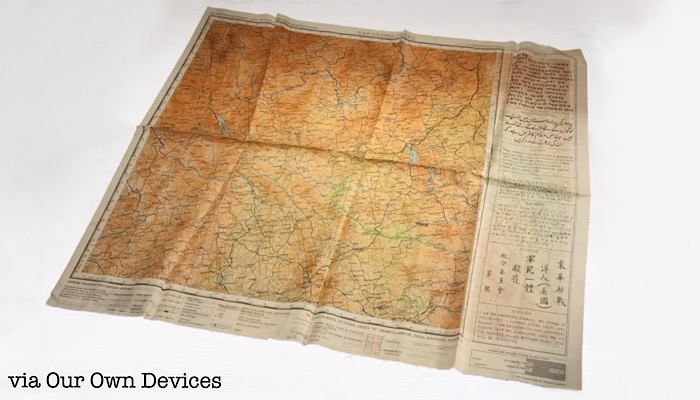
Oh, this is so good. I didn’t know any of this… That’s how well they kept the secret! Ha! Even their children don’t talk about it.
Ha! So then that’s how they started printing the first secret job – maps for the Air Force. And then from that came the idea that maps could be sewn into the uniforms. Hundreds of thousands of maps were printed in absolute secrecy… The D-Day landings alone needed many thousands of maps. And it was for all the Allied forces, of course.
And did any of this make sense, Maggie? Did Waddingtons actually print maps anyway? Or print on cloth for that matter?
Oh, yes! Yes – to both questions. From their early theatrical days, Waddingtons printed programs for the British Royal Family on silk. These would be used in their box at Royal Command performances. The Royal Family didn’t like to rustle their programs, so they had them printed on silk… Then – in regard to the maps themselves – Waddingtons were known as map printers anyway. So it was logical that they might be able to print maps on fabric.
Brilliant…
And as you know, locals would’ve removed all the road names and signposts as part of the war effort. So you really did need a high-quality map to find your way to anything useful during the D-Day landings… The Allied forces all had these amazingly detailed, accurate maps printed by Waddingtons. That must’ve given them a great tactical advantage because it’s said the Germans resorted to looting school maps from French classrooms!
I felt like that in Leeds yesterday – I was trying to find a Shake Shack!
Ha! Something else that’s amazing is that they had to print decoy maps as well… When they were printing maps for the D-Day landings, the location of where it was going to happen was a closely guarded secret. That meant they had to print maps for seven locations – because they weren’t allowed to know where it was really going be.
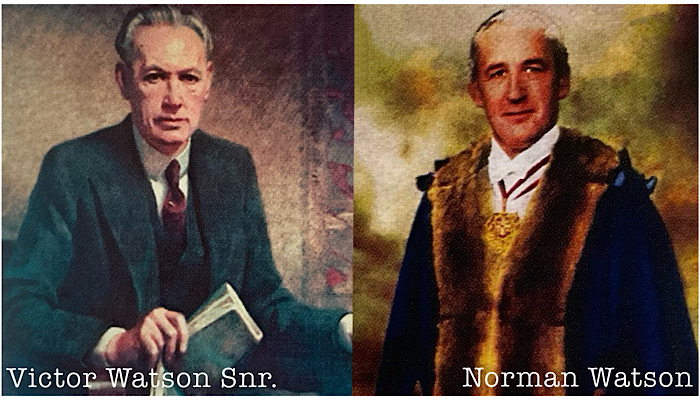
Oh, my days! So even when Waddingtons were printing the maps, they had to create fake maps? Oh, it’s good, isn’t it?! It’s really good. Just as a small aside, I do worry about this sort of thing… Because I’m haunted by the feeling that if these secrets were left to today’s society, somebody would come into Waddingtons and – within five minutes of being asked to print a map – they’d be posting on social media: “Making top-secret maps at Waddingtons. LOL!”
Ha!
You know what I mean?! Bletchley Park was kept secret for 30 years. Boris Johnson couldn’t keep a cheese party quiet! But… Within the factory at Waddingtons, there were all these secrets…
Absolutely true… Because at the same time as one side of the factory was making maps and Monopoly sets and printing banknotes, the other side was manufacturing shells and cartridges…
You heard Claire Palmer’s gasp of astonishment there, Maggie! It might not be clear to readers that you and I are talking while your fellow interviewees hang on your every word! Although Alistair, your husband – Beric Watson’s son – also wants to add something…
Alistair: I just wanted to add something about the maps… Some escape routes and instructions were printed on something called guncotton – a highly explosive material. That way, if you got captured, you could just put a lit cigarette to the corner – it would literally disappear in a puff of smoke… Fizzle away – it wouldn’t even leave an ash. Workers had to stand by with fire extinguishers when they were printing on it! And then there was another one they developed that just looked like a blank sheet of linen. It wasn’t until you urinated on it that any details showed up. I don’t know if they were ever used, but that’s certainly something that got made.
I don’t know if you’re pulling my leg! I mean, the creativity of all of this is just on another level…
Maggie: Yes… And while Christopher Hutton is rightly credited with being a marvelous inventor who masterminded MI9’s ingenious schemes, I don’t think it would’ve been physically possible to do these things in a lot of different areas were it not for the ingenuity of the companies involved. Because it was their knowledge and skill that made it a reality.
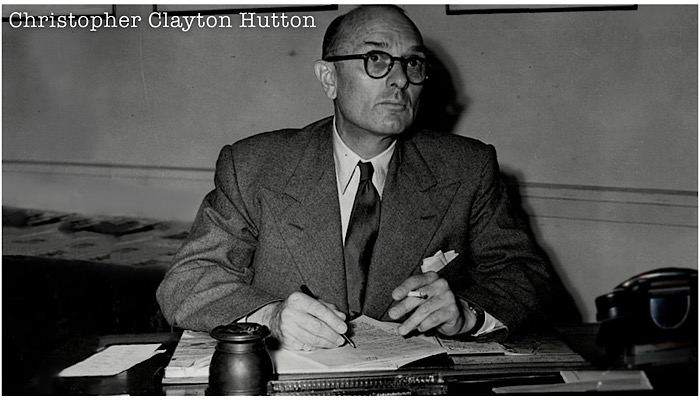
You’re absolutely right; it’s a shrewd point, Maggie. Because WITH the knowledge of people to back it up, what Hutton’s saying is genius… Without it, he’s a bloody loon! “What, ho! I want to piss on a rag and make a map appear! Get onto that won’t you, Watson?” Just sounds bonkers!
Ha! Exactly! And on that, Norman Watson – Beric’s father – used go down to Whitehall to pick up the maps that needed printing. Sometimes he went down in person, other times, Mr. A would bring them to Norman. Either way, the rule was that nothing was ever written down. So all the orders were given verbally – either in person or over the phone. That means there’re no paper records… Even though Waddingtons had fantastic company records, and everything is beautifully archived, there’s very little documented about the secret activities.
Incredible. Well, I have to tell you, Maggie, I’m so thrilled you were able to join us today. This has been absolutely fascinating; I don’t know anybody that knows about this stuff, and everybody should! I sincerely hope someone somewhere is reading this article and wants to stage your play, make a documentary, or film about it.
Maggie: Well, it’s only part of the story at the moment. There’s so much more to tell.
Well, it needs to be more! That’s all I can say! So now… I need to wrap this up by saying we’re going to jump back to the rest of the Waddingtons story and pick up where we left off there. So now I’ll link back to that here – but thank you so much for that, Maggie. And to you, also, Alistair; I appreciate you jumping in.
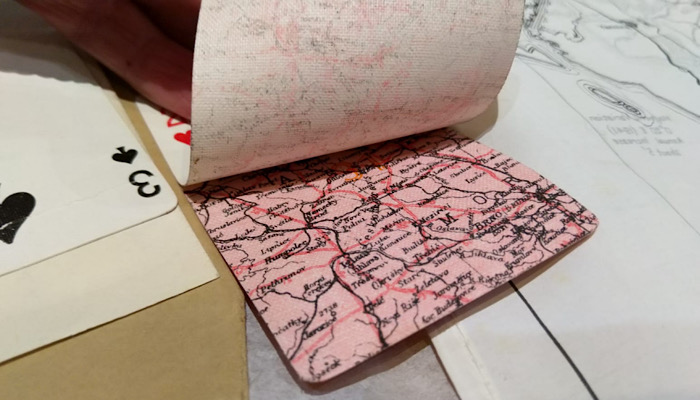
–
To stay in the loop with the latest news, interviews and features from the world of toy and game design, sign up to our weekly newsletter here





